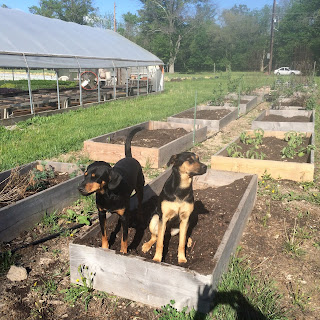Mother Nature and God don’t own them anymore (Neil
Young)
This is being written on
December 30th, 2015. It is 48º and raining. The mid-west is being
hammered with tornadoes and the Mississippi River is escaping into various
cities along its path. The scientists are anticipating an El Nino weather event
that could be the most powerful on record. Some areas of the country will see
record warmth, record storms with attendant flooding and landslides causing
devastation. Today the North Pole temperature was 40º above normal.
Last season, despite seasonally
cold weather, Z Food Farm continued with its Philadelphia Rittenhouse Square
Market through the first Saturday in January 2015. The last farm stand was the
Wednesday of Thanksgiving week. The diversity of available produce at market
was limited, but it was still cost effective to do the market. This season the
weather has been unseasonably warm. This has allowed the farm to continue
having a bountiful harvest. Though most of what is being sold is cool/cold
weather compatible, the warmer weather has allowed certain crops (kale, chard,
spinach) to continue to grow and thrive. This has allowed the farm stand to
open for the three Wednesdays after Thanksgiving and to continue at the
Rittenhouse market. And on January 2, 2016 we will be providing a wide array of
produce at the Rittenhouse market. As the pictures that follow will convey, Z
Food Farm will have quite a bit to offer.
As an overview, since
this blog has not been kept up to date, farm season 2015 was far more than not
successful. There were snap peas in the spring, a great harvest of watermelons,
and a great crop of tomatoes, among many other successes. There were a couple
of crops that did not fare as well as in previous seasons and for one reason or
another there were a few things that never got planted. Farming is an ongoing
challenge that requires the farmer to do their best on a daily basis with very
little time to sit back and relax. Regardless of where you live, or which
farmers’ market you go to, the next time you see a farmer, convey your
appreciation for what they are providing. As a general guideline, your local
farmer will provide you with produce that is fresher and tastier than what you
will purchase at a grocery store.
Support local farmers.
Support sustainable farmers. Support certified organic farmers.
This is the produce that was available for Saturday, December 18. Most of this will be available for the January 2, 2016 market. What's not pictured are bags of salad mix, spinach, baby red russian kale, and Asian greens.
Sadie and Ernie say hello. Over the course of the season Sadie demonstrated that she is a true successor to our old dog Hule in ridding the farm of ground hogs. Ernie is an able assistant, but he is more of a lover.
This is the produce that was available for Saturday, December 18. Most of this will be available for the January 2, 2016 market. What's not pictured are bags of salad mix, spinach, baby red russian kale, and Asian greens.
Sadie and Ernie say hello. Over the course of the season Sadie demonstrated that she is a true successor to our old dog Hule in ridding the farm of ground hogs. Ernie is an able assistant, but he is more of a lover.
Happy and Health Eating To One and All.






























